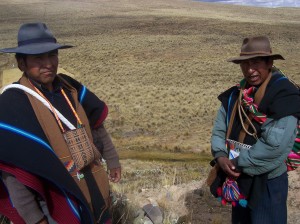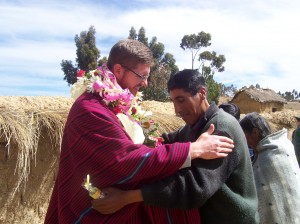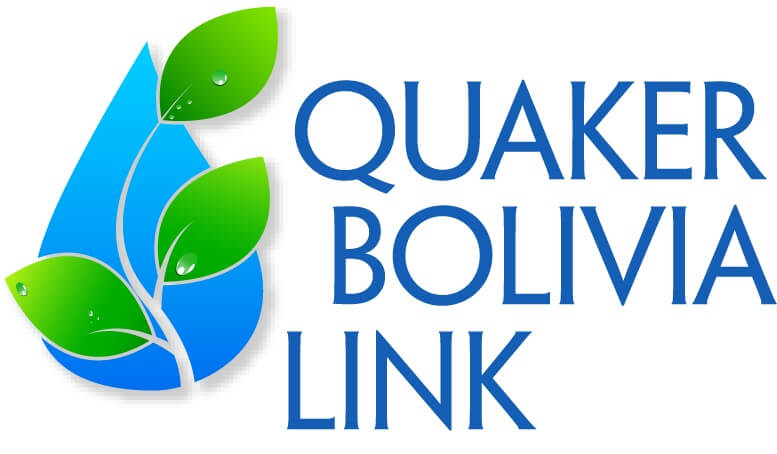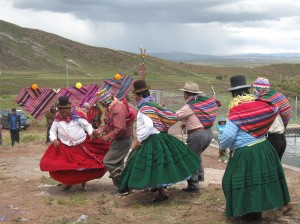In a recent letter to our supporters, we mentioned that our publicity materials are nearly always in black and white. We believe you want us to spend your donations on the Bolivian people, not glossy colored mailings. Unfortunately, the black and white pictures can’t show the beautiful colors on the Altiplano. Click here for our media gallery to see these pictures in full color. If you want to see the pictures from our most recent letter, go to our Global Giving project page.
As you click on the pictures, you might look for the red ponchos and aguayos, important artifacts of the Altiplano culture.
El Poncho Rojo

Mallkus, or traditional village leaders, from the community of Condoroca. These men have black ponchos covering their red ponchos. Also notice the whips and small bags.
In many of these pictures you will see men dressed in the a striped red poncho. This poncho is a traditional symbol of authority on the Altiplano. The men will also wear a hat, scarf and small woven bag which contains coca leaves and a small amount alcohol. The full attire includes a ceremonial whip – another symbol of authority in the villages.
Villages will present a red poncho as a gift to express their appreciation for their QBL water supply or greenhouses. Gifts may include a combination of the poncho, the scarf, achullo (the woven hat with ear coverings) or a flower garland. Visitors might also be showered with confetti or flower petals. These expressions of gratitude are deeply heartwarming and very much part of the Aymara culture. We often pass on the gifts to our supporters – they are the ones who made the project possible.

The project leader in the community of Pachacuti presenting Robert with a gift of a red poncho and a garland of flowers. Click on the picture to see the full size.
The Aguayo
You will see many of the women with a large colorful woven cloth slung around their backs. This is the aguayo and is used to carry personal belongings. When gathering for their shared meals the women spread their aguayo along the ground and lay their food on top. The aguayos also serve to carry babies. In La Paz the aguayo is one of the more persistent traditional customs as the women move from rural to city living. Wearing the aguayo and unique bowler hat is a demonstration of their pride in being Aymara.

